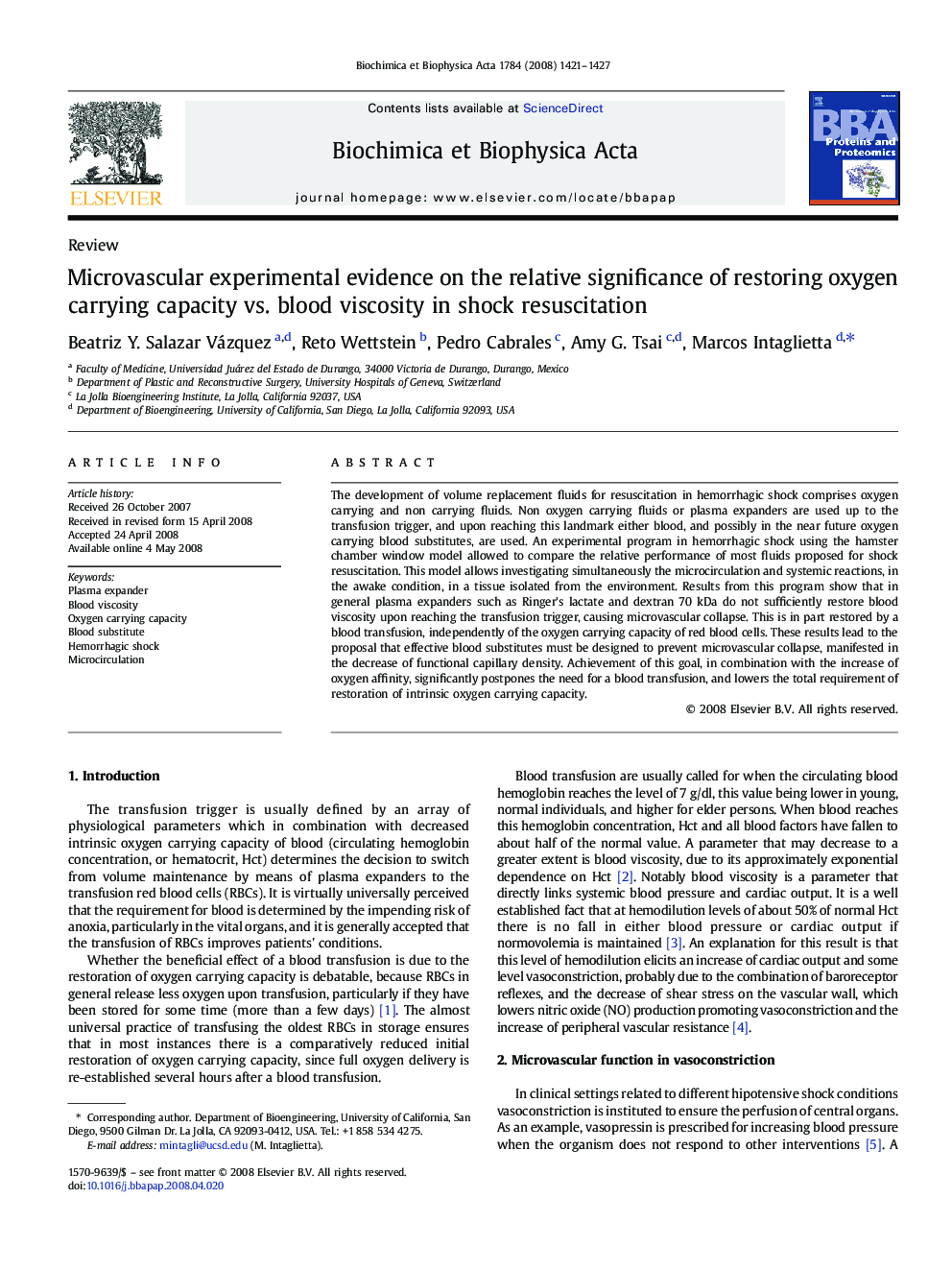| Article ID | Journal | Published Year | Pages | File Type |
|---|---|---|---|---|
| 1179042 | Biochimica et Biophysica Acta (BBA) - Proteins and Proteomics | 2008 | 7 Pages |
The development of volume replacement fluids for resuscitation in hemorrhagic shock comprises oxygen carrying and non carrying fluids. Non oxygen carrying fluids or plasma expanders are used up to the transfusion trigger, and upon reaching this landmark either blood, and possibly in the near future oxygen carrying blood substitutes, are used. An experimental program in hemorrhagic shock using the hamster chamber window model allowed to compare the relative performance of most fluids proposed for shock resuscitation. This model allows investigating simultaneously the microcirculation and systemic reactions, in the awake condition, in a tissue isolated from the environment. Results from this program show that in general plasma expanders such as Ringer's lactate and dextran 70 kDa do not sufficiently restore blood viscosity upon reaching the transfusion trigger, causing microvascular collapse. This is in part restored by a blood transfusion, independently of the oxygen carrying capacity of red blood cells. These results lead to the proposal that effective blood substitutes must be designed to prevent microvascular collapse, manifested in the decrease of functional capillary density. Achievement of this goal, in combination with the increase of oxygen affinity, significantly postpones the need for a blood transfusion, and lowers the total requirement of restoration of intrinsic oxygen carrying capacity.
